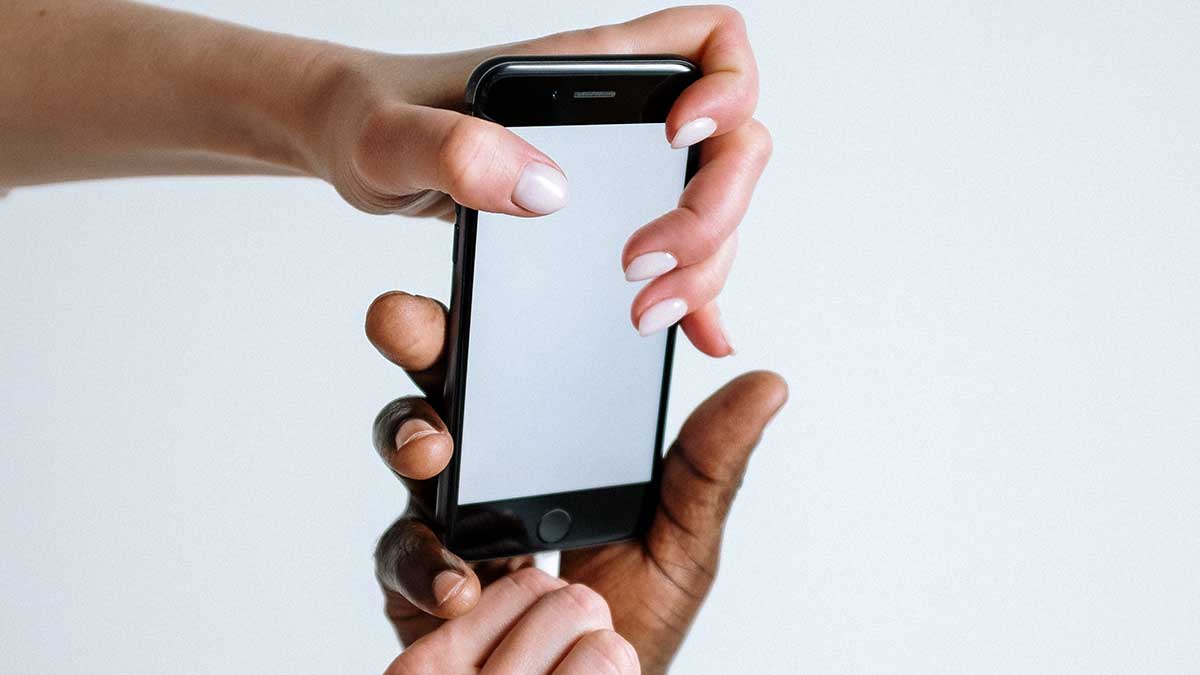In a world where everyone is using “smart” technology, just how smart is that? It’s time to reduce the negative effects of technology and make safer, and smarter choices — putting your life and health first.
We live in a world inundated with smart technology. Smart devices such as cell phones, Kindles, laptops, iPads, Alexa, not-so-smart watches, Fitbits, and other AI servants surround us daily. These devices also include things like security alarms, baby monitors, wireless internet routers, smart appliances, smart doorbells, smoke alarms and a variety of other “home helper” devices.
All of these devices are using radio frequencies that emit radiation at levels that can can cause disturbances in biological systems – human, animal, insect, fish, and plant. WiFi and bluetooth devices are constantly two-way signaling when turned on, moving through our biological pathways and frequencies.
Table of Contents
What is WiFi?
WiFi is not exactly what you may think. It is not an acronym for wireless fidelity, but the idea did come from “hi fidelity” or “hi-fi.” Remember this? Sound quality was what everyone wanted — and so it happened.
WiFi is a marketing term created by a wireless alliance network that considered this term easier for the public to digest than “ieee802.11b direct sequence.” This is a standard by which all devices are communicating with each other. In other words, wi-fi is referring to the interoperability of things.
Every appliance that you own, or work with, that is not corded and is working via “wi-fi” and this means radiation emissions from them are coming through all biological systems.
Cell towers, those large unsightly structures, are totaling more than 310,000 thousand and the numbers rise every year to serve over 300 million cell phone in this country. They have receiving and transforming capacities in their structures perched on the tall poles or stands. Often they are camouflaged to look like trees, crosses, or other structures to hide their unsightly appearance.
Covering four major carriers — AT&T, T-Mobile, Verizon, and Sprint — these towers can cover up to 45 miles of transmission to devices. And, you can see at least one every half to one mile in larger cities. Towers are even being placed on ocean floors!
5G Technology and Beyond
5G, the carriers newest hi-speed technology, is untested by the FCC or telecom for safety in biological systems, however it is still present in most cellphones in the US today. It emits frequencies in the realm of 10-20 gigahertz, or 10 to 20 billion cycles per second speeds.
5G requires dense infrastructure in order to work as the industry would like. This means millions of small cells will need to be installed near homes and businesses for the connections to be intensified.
To compare the speeds and frequencies by generation, consider this:
- 1G = 2.4 kilohertz (this was audio only, at 2.40000 cycles per second) in the 1980’s
- 2G = 50 kilohertz (which brouhg us calls, texts, SMS, and messaging) in 1991
- 2.75-3G = 384 kilohertz (this meant faster broadband) in 1998
- 4G = 100 megahertz up to 1 gigahertz (fast, HD, videos, gaming, conferencing) in 2008
- 5G = Up to 20 gigaherz and rising as big tech increases to 6G and beyond
Keep in mind, in 2011 cell phone technology was designated as a Class 2B Carginogen, which means that is could possibly cause cancer.
Wired technology is just simply safer. Unlike wireless devices, there is virtually no radiation coming from a wired tech device. Consider using wired phones and ethernet cables for the safest environment. Your life and the rest of the world around us matters!
The first step to taking back your life and health is recognition of the issue. Knowing that this is serious and is affecting your life, it is time to change how you approach wireless technology and your phone habits.
![]()
Cell Phone Addiction
Addictions are often associated with things such as illegal substances, food, gambling, etc. Currently there is no medical disorder listing for “cell phone addiction,” however research shows the 10 to 20 percent of the general population reports feeling addicted to, or at least lost without, their cell phones.
In fact nomophobia is the colloquial for smartphone addiction and means the “fear of not having your phone.” And, textaphrenia is the “fear of not being able to send or receive texts.”
A report released in October 2019 by the nonprofit organization Common Sense Media found that 8- to 12-year-olds in the United States now use screens for entertainment for an average of 4 hours, 44 minutes a day, and 13- to 18-year-olds are on screens for an average of 7 hours, 22 minutes each day (The Common Sense Census: Media Use by Tweens and Teens, 2019). These numbers don’t count time using screens for schoolwork or homework.
You may have a cell phone problem if you:
- Use phone most of your day outside of work or home
- Have significant distress as a result of non-use of your phone
- Have unsuccessfully tried to limit your use or refuse to limit your use of your phone
- Have “phantom vibrations” — feel your phone ringing, even if it is not truly ringing
- Neglect your personal relationships due to constant use of your phone
- Continue use your phone despite ill effects on your health
Cell phone addiction can lead to things such as depression, anxiety, loneliness, social isolation and withdrawal, loss of relationships, insomnia, and motor vehicle accidents.
Medical conditions such as cardiac rhythm issues, hypertension, coagulation or clotting, hormone disruptions, neurological problems, and cancer can occur.
Breaking a Phone Habit
The first step to taking back your life and health is recognition of the issue. Knowing that this is serious and is affecting your life, it is time to change how you approach wireless technology and your phone habits.
Some important moves to help reduce exposure to dangerous radioactive elements and to addictive tendencies include:
- Keeping your distance — it makes a difference
- Knowing to turn off your phone or put in airplane mode, with WiFi and bluetooth turned off as well
- Turning of wifi and routers when not is use and at night
- Limiting your use of devices to an absolute need only
- Don’t use your phone near your head — use the speaker or hands-free options
- Avoid phone use in bedrooms and for a few hours before sleep
- Do not put wireless devices into children’s hands
- Try to use wired devices and ethernet cables when at all possible
- Avoid use in cars, elevators, or other enclosed “metal” places
- Obtain an EMF meter to check the amount of radiation that you are exposed to
- Research all mitigation tools like pendants, bracelets, crystals, stones to wear or have in your home or workplace
- Avoid living anywhere near a cell tower
- Make a concerted effort to be closer to natural surroundings such as water, woods, and open spaces
- Engage your kids in more activities that eliminate cell phone use
- Stop paying for the phones and let your kids know that they will need to pay their way
- Have device-free mealtimes — no phones at all
- Stop the phone use at home and especially in evenings; turn off in evening and encourage reading books and/or other activities
- Check a website called Environmental Health Trust (environmentalhealthtrust.org) for most information that is truthful, scientific, and up-to-date
It’s imperative that you start connecting back to real living and interacting with people, animals, plants, and nature in general. This is all critical for a life of robust health and fulfillment.
If you or a loved on or friend may be in need of help. it is worth taking time to obtain this from a qualified provider of care. This may include:
- A naturopathic physician who recognizes and can assist/guide you for amelioration
- A holistic care center with behavioral/mental health providers
- A wellness coach to assist in planning lifestyle

Community Wide Changes
What is happening around us daily is affecting us all. This is a planet that was once free of artificial intelligence, and now it id enveloped by it. If you want to be a part of the salvation of the planet, you can’t hide behind the doors.
Personal and community cooperation is really needed to change things! Get involved with local groups including Wired-In Hernando that was started at the <https://wellcomeomcenter.com>WellCome OM Integral Healing & Education Center recently.
Make a commitment to help your neighborhood and surrounding areas. Talk to your HOA committees and let them know this is a concern.
Resources include Environmental Health Trust, a non-profit organization founded by Dr. Devra Davis, PhD, MPH, who has collaborated with other non-profits to help spread the science and alert people globally on the dangers inherent and rampant in the realm of wireless technology.
Help yourself and your world today!
References and Recommended Reading
- Consumer Beware: The Ease of Deception in the Food Industry - October 28, 2025
- The Modern Plague of Addiction: Reflections on a Painful Subject - July 29, 2025
- Let Go to Grow: 10 Transformational Steps to Embrace Change and Thrive - July 29, 2025





